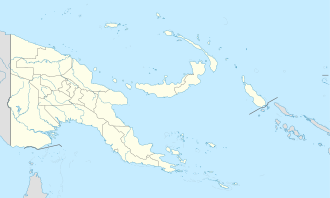 Landsat 7 image of the Amphlett Islands | |
 | |
| Geography | |
|---|---|
| Coordinates | 9°15′00″S150°50′00″E / 9.25°S 150.83333°E |
| Archipelago | D'Entrecasteaux Islands |
| Adjacent to | Solomon Islands |
| Total islands | 18 |
| Major islands | Wamea, Wawiwa, Yabwaia |
| Area | 25 km2 (9.7 sq mi) |
| Highest elevation | 586 m (1923 ft) |
| Administration | |
| Province | Milne Bay |
| LLG | Dobu Rural |
The Amphlett Islands (sometimes called the Amphlett Isles or Amphlett group) are an archipelago in the Solomon Sea. Administratively, they belong to Papua New Guinea's Milne Bay Province, in the Dobu Rural local-level government. Some sources consider the group of 18 islands to be part of the larger D'Entrecasteaux Islands, [1] and they lie about 10 km north of Fergusson Island. [2]
